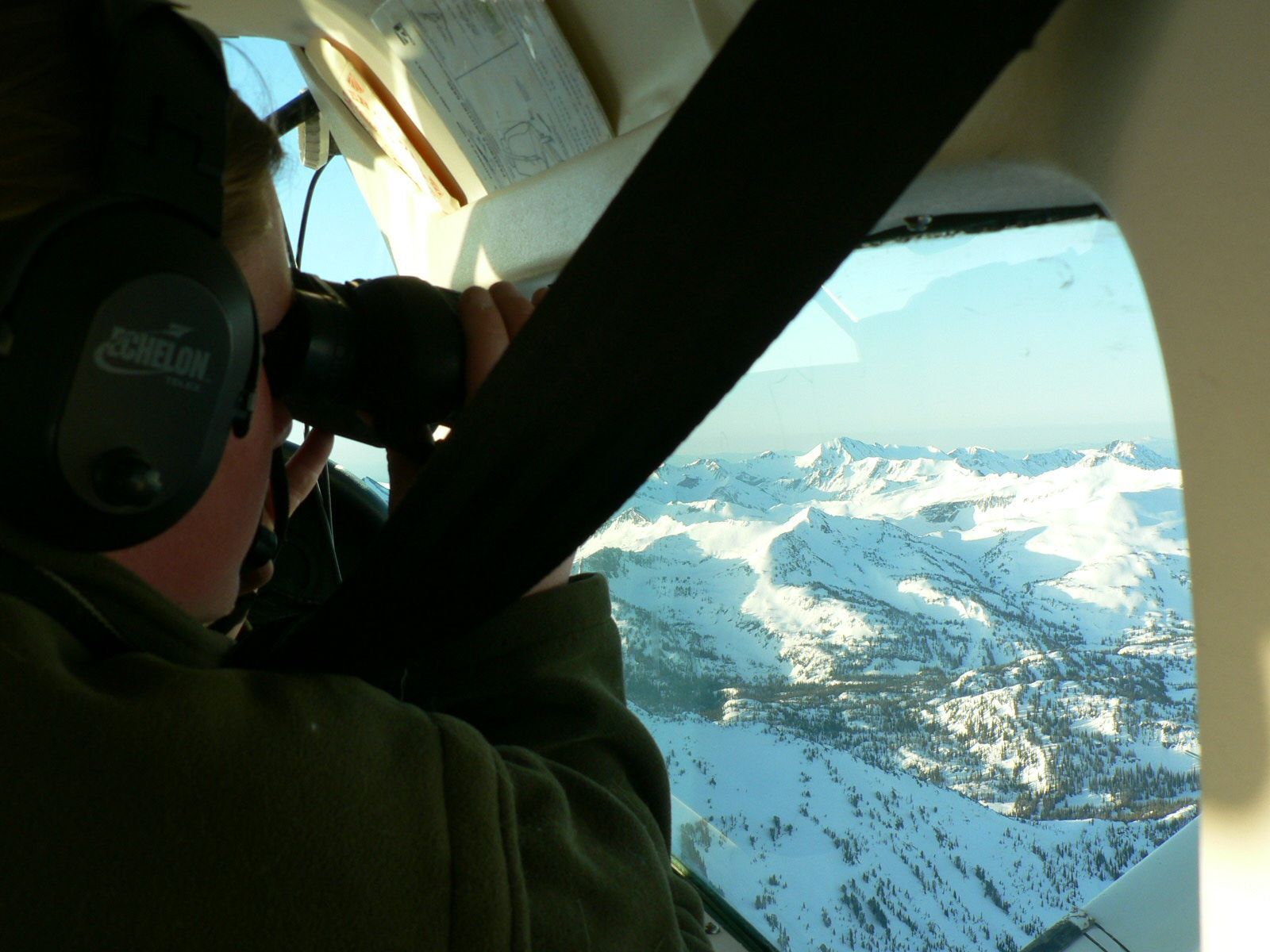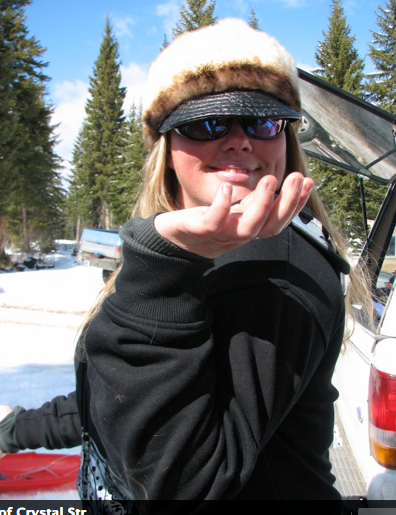Wallowa Bighorn Sheep with Crystal Strobl
We’ve been getting wet out here with a fair serving of rain. Grande Ronde has jumped up and we’ll try to keep you posted on what that does for the fishing once this gets a chance to settle.
Key Takeaways
- Bighorn Sheep Research in Wallowa County: The story honors wildlife biologist Crystal Strobl, who dedicated her work to studying and protecting Wallowa County’s bighorn sheep through aerial surveys and field research.
- Unique Fieldwork Adventures: These
bighorn sheep counts involved flying over rugged terrain like Hells Canyon and the Snake River, using radio collars and visual spotting to track herds across Oregon and Idaho.
- Personal Connection to Conservation: Crystal’s deep knowledge of the land and her close relationship with wildlife reflect the passion that drives conservation work in places like
Wallowa County and the Lostine River.
- Memorable Moments in Nature: The narrative captures authentic outdoor experiences—from steelhead fishing on the
Grande Ronde River to snowmobile trips observing sheep in winter—showing the beauty and challenge of Oregon’s wild landscapes.
- Legacy of a Field Biologist: Beyond her expertise, Crystal’s legacy lies in her curiosity, kindness, and commitment to wildlife—a reminder of how personal dedication fuels successful conservation efforts.
Happy to report success in the spey rod department. Broke that thing in last week on the Grande Ronde and was double-jazzed to catch my first steelhead on the swing and spey rod in one go. Thanks to a busted camera, I don’t have the photo to back it up so you’re just going to have to show some trust on this one. She was a bright hen pushing 30 inches. Scar on her left side. Came up and gobbled the fly I was inexpertly skating. She was a real beauty.
Remembering Crystal
I’ve got some pictures here taken on outings to count bighorn sheep with Crystal Strobl, a wildlife biologist and great friend of ours that we lost recently. She loved Wallowa County and the feeling was mutual.
She knew this country better than most and was great about sharing her unique vantage point through such a unique job. Take a look.
Here’s a view of the mountains while flying with electronic gear rigged on the plane to pick up radio collar signals. We also saw a mountain goat trotting across a meadow on that flight.
On the trips I went along on, Crystal would run the electronics, scan with binoculars and direct the pilot, Joe Spence, same guy that flies us out of Dug Bar, to where the sheep were. Joe would circle while we all counted bighorns.
Crystal and Joe were usually very close or exactly the same on their counts.
Crystal: “I got 18.”
Joe: “Me too.”
Crystal: “What about you, Jonny?”
Me: “Uh . . . four?”
Crystal: “Right. We’ll go with 18.”
Here’s what it looked like when the sheep were in timber and Joe would tip the plane up on a wingtip, circling and circling while they counted and I threw up in the back because of all the spinning.
Here’s the view flying over Hells Canyon Dam and the Snake River. Some of these bighorns make their way back and forth between Oregon and Idaho once in a while. It’s also one of the most scenic stretches featured on our guided Snake River rafting trips.
Check out the frosty breath on this ram from the Lostine River area. The nearby Wallowa River region also offers pristine wilderness and opportunities for multi-day rafting trips. This trip was made on snowmobiles up to a trap where the sheep milled around, drawn by bighorn sheep treats that are fed in the winter to bring them in for research purposes.
I got pretty close, but they were far more comfortable around Crystal. I saw her reach out and pull a tick off one of the ewes. Amazing. Just amazing.

Crystal scanning for sheep.
Frequently Asked Questions
This story shares a heartfelt tribute to wildlife biologist
Crystal Strobl, her work tracking
Wallowa County’s bighorn sheep, and the author’s experiences with both fishing and field research in Oregon’s rugged country.
Who was Crystal Strobl?
Crystal Strobl was a respected wildlife biologist and friend of the Winding Waters River Expeditions team. She worked extensively in Wallowa County, tracking and studying bighorn sheep. Her deep knowledge of the land and dedication to conservation left a lasting impression on everyone who knew her.
What was Crystal Strobl’s work with bighorn sheep?
Crystal specialized in monitoring and counting bighorn sheep populations across Wallowa County. She used radio collars and aerial surveys, often flying with pilot Joe Spence to locate and track herds. Her research helped biologists better understand the movements, health, and habitat of these mountain animals.
Where is Wallowa County, and why is it significant for wildlife?
Wallowa County is in northeastern Oregon, known for its dramatic mountains, deep canyons, and rich wildlife. It’s home to species like bighorn sheep, mountain goats, and steelhead trout. The area’s diverse terrain makes it ideal for both wildlife research and outdoor recreation.
How are bighorn sheep tracked in Wallowa County?
Researchers use radio collars that emit signals picked up by electronic receivers on aircraft. During flights, biologists like Crystal scan for these signals, visually confirm the herds, and count individuals. It’s a precise process requiring coordination between the biologist and pilot.
What challenges come with counting bighorn sheep from the air?
Aerial surveys are demanding — spotting sheep in timbered terrain can be tough, and the plane often circles tightly for a better view, which can be disorienting. Accurate counts require experience, teamwork, and quick observation to distinguish between similar-looking animals in motion.
How do bighorn sheep behave during winter in this region?
In winter, bighorn sheep gather around feeding stations or traps set up by researchers. These locations use special treats to draw them in for tagging, health checks, and data collection. The cold season also makes the animals more visible against snow-covered landscapes.
What other wildlife is seen in the Wallowa and Hells Canyon area?
Besides bighorn sheep, the region hosts mountain goats, mule deer, elk, and birds of prey. On the same flights, observers sometimes spot goats crossing meadows or eagles gliding over the Snake River near Hells Canyon Dam. It’s one of Oregon’s most biodiverse areas.
How did the author describe Crystal Strobl’s connection to wildlife?
The author recalls Crystal’s calm confidence around animals — even removing a tick from a ewe by hand. Her ease in the wild reflected a deep respect and understanding of the creatures she studied, earning her both scientific respect and personal admiration.
What role did Joe Spence play in these surveys?
Joe Spence was the pilot who flew Crystal and others during aerial sheep counts. Known for his skill navigating rugged canyons and mountains, Joe worked closely with Crystal, often matching her counts perfectly — a testament to their teamwork and precision.
What is Winding Waters River Expeditions?
Winding Waters River Expeditions is an outdoor adventure company based in Oregon. They lead guided trips on rivers like the Grande Ronde and Snake, combining fishing, rafting, and nature exploration — often sharing stories about the land, wildlife, and people like Crystal who help protect it.
The post Wallowa Bighorn Sheep with Crystal Strobl appeared first on Winding Waters River Expeditions.






